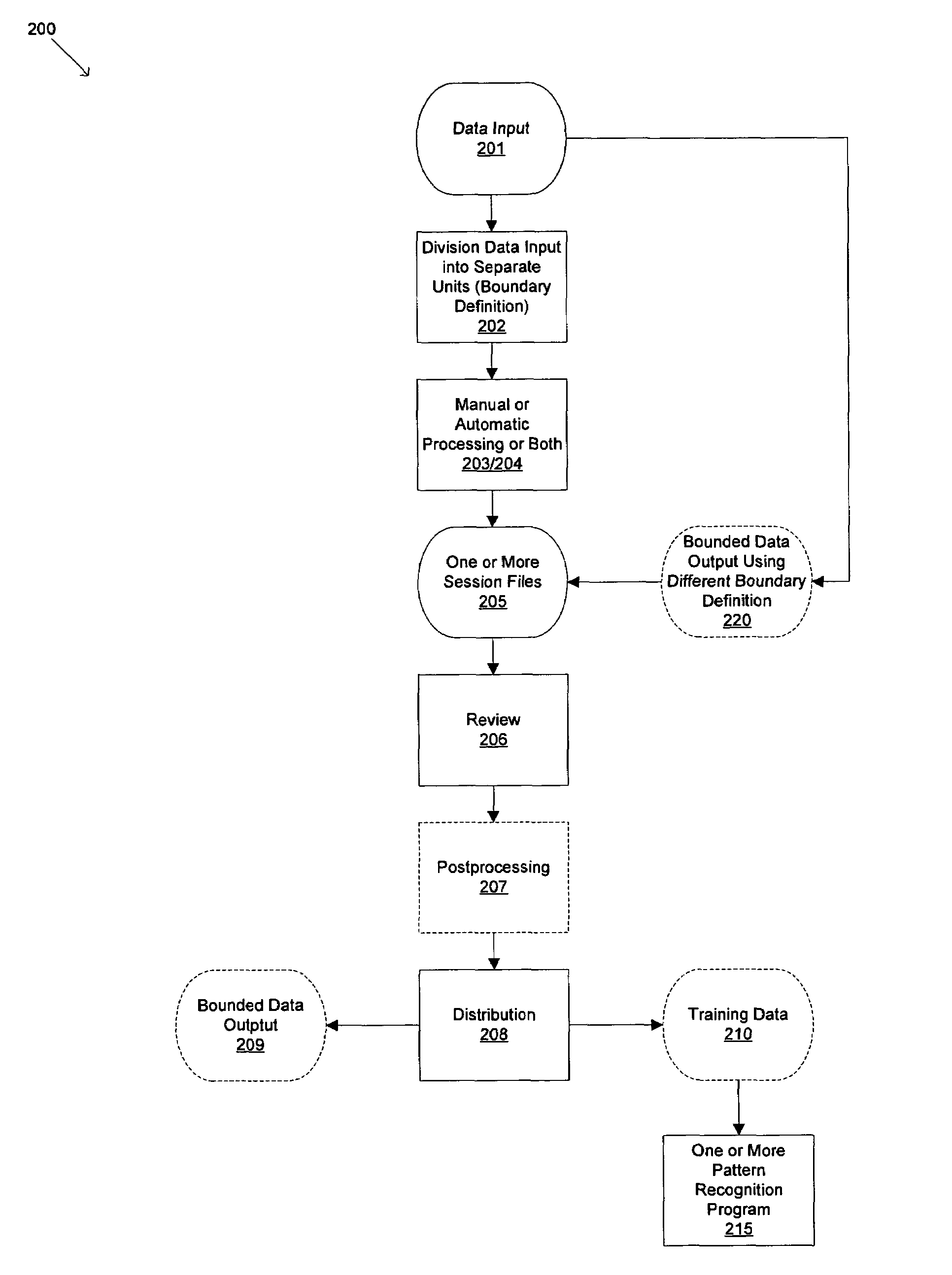Synchronized pattern recognition source data processed by manual or automatic means for creation of shared speaker-dependent speech user profile
a pattern recognition and source data technology, applied in the field of speech and language processing, can solve the problems of not being able to achieve the typical end user or independent speech developer, many hours of computational time is required to create an acoustic model, and word models have not been used for large vocabulary tasks. to achieve the effect of maximizing the likelihood of acoustic similarity and avoiding time-consuming generation of separate acoustic models
- Summary
- Abstract
- Description
- Claims
- Application Information
AI Technical Summary
Benefits of technology
Problems solved by technology
Method used
Image
Examples
Embodiment Construction
[0123]While the present disclosure may be embodied in many different forms, the drawings and discussion are presented with the understanding that the present disclosure is an exemplification of the principles of one or more inventions and is not intended to limit any one of the inventions to the embodiments illustrated.
I. System 100
[0124]FIGS. 1A, 1B, and 1C together comprise a block diagram of one potential embodiment of a system 100. The system 100 may be part of the invention. Alternatively, the invention may be part of the system 100. The system may consist of functions performed in serial or in parallel on the same computer 120a or across a local 170 or wide area network 175 distributed on a plurality of computers 120b-120n.
[0125]Each computer 120 includes input and output (I / O) unit 122, memory 124, mass storage 126, and a central processing unit (CPU) 128. Computer 120 may also include various associated input / output devices, such as a microphone 102 (FIG. 1A), digital recor...
PUM
 Login to View More
Login to View More Abstract
Description
Claims
Application Information
 Login to View More
Login to View More - R&D
- Intellectual Property
- Life Sciences
- Materials
- Tech Scout
- Unparalleled Data Quality
- Higher Quality Content
- 60% Fewer Hallucinations
Browse by: Latest US Patents, China's latest patents, Technical Efficacy Thesaurus, Application Domain, Technology Topic, Popular Technical Reports.
© 2025 PatSnap. All rights reserved.Legal|Privacy policy|Modern Slavery Act Transparency Statement|Sitemap|About US| Contact US: help@patsnap.com



